
A souped-up, fully winterised big sister to La Sportiva's Trango Cube GTX, the Trango Ice Cube GTX is a technical ice and mixed climbing boot with an impressively low weight. Stiff for sustained front pointing, nimble on difficult ground, warm enough for Scottish winter (within limits), and yet not so heavy or clumpy that they'd feel out of place in the summer Alps or even a UK scramble - these are about as versatile as a B3 boot gets.
This stop-start winter has been a frustrating season for anyone with a full time job, and doubly so if you're trying to review mountain boots. To date my pair of Ice Cubes have seen no actual ice climbing; indeed I've had to resort to dry tooling to get enough mileage on steeper ground. Out on the hills however they have at least managed several days of general winter mountaineering in a variety of conditions from benign to wild. It's been enough to get a good feel for them; and I'm impressed.
Weight versus warmth
Every B3 boot I've worn hitherto has been comfortably over 2000g per pair (having big feet is a disadvantage here!). Compared to any of them the Trango Ice Cube GTX is like a breath of fresh air. At only 1758g for the pair (size 47, my weight) this must be one of the lightest B3 boots available. Indeed they even undercut the less climbing-oriented B2 Scarpa Charmoz OD that I reviewed recently, themselves no heavyweights. As a comparison from La Sportiva's website, the Trango Ice Cube is listed as 1380g/pair (size 42), which isn't a lot heavier than the significantly less winter-climbing-oriented Trango Cube GTX at 1350g/pair. Considering the extra stiffness and support on offer from the Ice Cube, that must have taken some doing.
A useful B3 comparison meanwhile is with the rather chunkier Nepal Cube GTX at 1780g/pair (again in size 42). Assuming all other things are equal, shaving off this much weight is clearly going to make them comfier and less tiring over the course of a long day on your feet, while the benefit when climbing is obvious too. In my experience it's an advantage you can really feel when you wear the Ice Cube.
But there is always a tradeoff, and I think what the Ice Cube has chiefly sacrificed over heavier boots is a degree of warmth. With its techy blend of synthetic uppers and an insulated honeycomb footbed, this boot certainly feels warmer than you might fear given the summer boot-like weight. However, though I've heard others praise them for warmth, I've personally suffered moderately cold toes on occasion - specifically when stationary for long periods in wilder weather. While this might in part be down to a fitting issue (see below), I doubt I've ever subjected them to minus double digit temperatures. If a bit of honest Scottish ming nudges their comfort envelope, these would clearly not be the boots for winter alpinism or 6000m peaks. For Continental style ice climbing in more clement, albeit on paper colder conditions, the lightweight insulation might be less of an issue.
Fit
La Sportiva tend to be known for their narrow fit, and true to form the Ice Cube is a distinctly narrow boot - particularly at the front, which has a pointed profile and (in keeping with most climbing-oriented boots) an asymmetrical bias towards the big toe. If, like me, you have broad-toed feet, you may struggle to achieve the perfect fit with this boot. Having experimented with various combinations of insole and sock I've settled on a workable solution. By replacing the standard floppy insole with Superfeet I've gained a bit of modest arch support that helps prevent the foot spreading towards the front of the boot; combined with a thinner sock than I'd normally wear in winter, this means I can get by with the narrow fit. It's not ideal for big distance days, but it is tolerable. Despite the narrow width there's a fair amount of volume, or depth, in the toe box, which does give you some welcome wiggle room for the toes when stood chilling on belay.
I do wonder if my fit issue may partly explain why I've been getting cold toes. With thinner socks to solve the width at the toe, I've obviously got less insulation overall. In addition the lacing elsewhere in the foot has to be tighter to compensate. Has it been tight enough to compromise the circulation a little? I can't say for sure, but it's a theory.
I've no complaints about the heel however. Without putting any pressure on the achilles, I've found that the boot holds the heel securely in place. There's no unwanted movement at all when walking, and no trace of lift when front pointing. Top marks there!
Walking and climbing
No B3 boot is perfect for walking long distances, but some feel more clumpy than others. With the Ice Cube there's quite a flat rocker in the sole, so on easy walking terrain you do have a flat-footed feel. Their lightness, and the ankle flex, both help to mitigate this though, and while they might not be my first choice of boot for long winter hillwalking or low grade mountaineering days, I have certainly used them for this without regretting it.
The stiffness comes into its own as soon as you switch from walking to climbing. Thanks to my size 47 feet, I tend to find that leverage can create a bit of flex even on nominally fully stiff boots. Because of their lightness I did wonder if the Ice Cube would feel supportive when climbing. I needn't have worried. With its carbon fibre insert, the sole is a reassuringly robust and rigid platform for sustained front pointing. I'd have no hesitation picking these for a long ice climb (the chance would be a fine thing this season, sob). Meanwhile the flex in the ankle is great for nifty footwork.
Upper
Leather needs looking after and can wet out over a long day: it's no wonder then that synthetic alternatives are becoming more common on winter boots. Made from an abrasion-resistant fully-synthetic fabric, reinforced with a transparent thermo-plastic overlay, the uppers of the Ice Cube look striking and offer loads of support and protection without excessive weight. A huge wrap-around polyurethane rand provides additional scuff protection and structure. These uppers feel super tough, and I've yet to make a mark on them.
By the standards of mountain boots the cuff is cut relatively low, which does mean less ankle protection when walking on rough ground. With an occasional but annoying habit of twisting an ankle, I've found this is certainly a consideration on mountain days where an avoidable injury like that could have serious consequences. So far so good however. The flipside to this low cut is the freedom of movement the boot offers. La Sportiva call this the 3D Flex System; when climbing, I just call it brilliant. These are no clumpy moon boots; ankle flex is really superb, so footwork when mixed climbing feels as free and unencumbered as you could hope for.
Lacing is smooth-running, with a simple but effective lock-off to allow you to get different tension over the forefoot and on the cuff. The Ice Cube has a distinctive sewn-in gaiter, through which the laces run. I have two criticisms of this arrangement: firstly, the lace eyelet is not watertight, so when crossing streams you have to be aware that there's a small hole below the top of the gaiter; and secondly, the arrangement makes accessing the laces a wee bit of a fiddle when adjusting the tension or pulling the boots on/off.
Overall though I really like the gaiter. It's not a full over-boot design as found on models like the Sportiva G2 SM or the Scarpa Phantom Tech, but really just an extended cuff. While it offers less protection and warmth it's still enough to keep out snow and debris, and to negate the need for an additional gaiter in most circumstances. It is lighter than a full-boot gaiter too, and makes for a lower-profile boot. The water resistant Schoeller fabric is tough and very stretchy. At first I was concerned that the water resistant gaiter zip might prove a little narrow-gauge for the demands of a winter boot, but since you're only fastening an ankle cuff rather than forcing a zip up the full length of the boot, it seems up to the job after all.
A Gore-Tex lining provides breathable waterproofing, and I've no complaints in this regard. Indeed, thanks to the minimal gaiter it seems likely that the Ice Cube may be more breathable than some heavier winter boots. I don't have a reliable means to test this idea, but I've certainly never been sweaty in these boots.
Sole

The Vibram sole has a chunky winter tread that provides plenty of traction in soft snow, and a good big heel breast for downhill grip. This stiff sole is a reliable platform when kicking steps in harder snow too. On rock the rubber compound feels very grippy, and for crampon-free climbing there's a flat 'climbing zone' at the toe. A consequence of its grip is that the rubber seems to wear fast; I've already begun to lose the clean sharp edge at the toe, and other than mucking about at the crag to test them out I've done no rock climbing or scrambling yet. The Ice Cube can be resoled, and if you intend to do a lot of long walk-ins or summer alpine cimbing you may end up doing so sooner rather than later. There's some shock absorption in the sole, but as with all B3 boots you should expect a pretty firm ride.
Crampon compatibility
With their substantial plastic welts at toe and heel these B3 boots will take either a full step-in crampon (with front wire bail) or a semi step-in (with plastic cradle). The asymmetric profile of the sole seems to work well with a typical asymmetric climbing crampon; I've had an equally close and secure fit with a Petzl Lynx, a Grivel Air Tech and a Grivel G14, with plenty of front point showing in all three cases.
Summary
A superb lightweight winter boot with loads of technical juice in the tank, the Trango Ice Cube GTX combines the front pointing stiffness of a B3 with the lightness and nifty footwork of a summer mountain boot. It might not be quite as warm or protective as a typical heavier model, but on the other hand there's less of it to lug up the route. It's not cheap by any means, but for many climbers this will be all the boot they need. The fit is on the narrow side however, so broad-footed wearers should be double careful about trying them on before walking out of the shop.
La Sportiva say:
This boot with an integrated gaiter for technical use in the mountains is ideal for ice climbing and mixed terrain. This model is extremely lightweight and comfortable thanks to the seamless construction of the uppers that uses the Thermo Tech Injection™ technology. The protective, integrated snow gaiter with the water repellent zip makes the product even more waterproof while maintaining unaltered the breathability properties thanks to the use of the Gore-Tex Performance Comfort lining. The HoneyComb Tech carbon footbed guarantees a firm grip and contained weight. The all-around PU TechLite™ rand contributes to keeping volumes compact without compromising protection. Trango Ice Cube is fully crampon compatible and resolable: ideal for more technical mountaineering and both summer and winter climbs. Similar to other products in the Trango range the 3D Flex System helps to increase ankle movement thereby enhancing control and precision even on steep terrain.




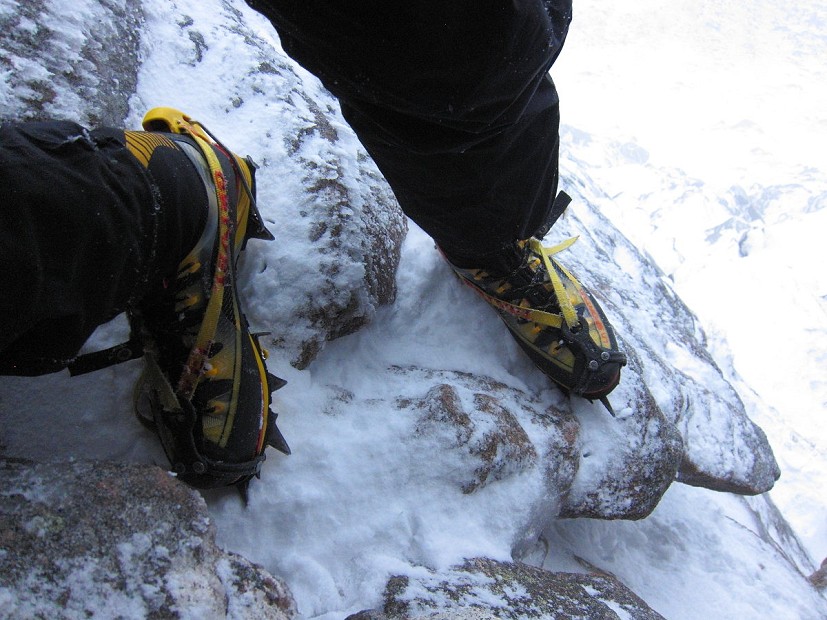
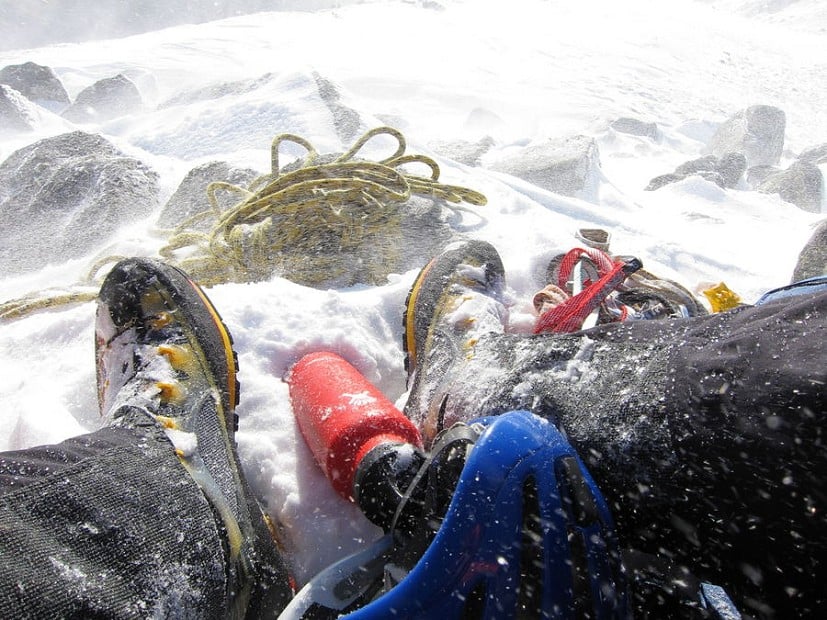
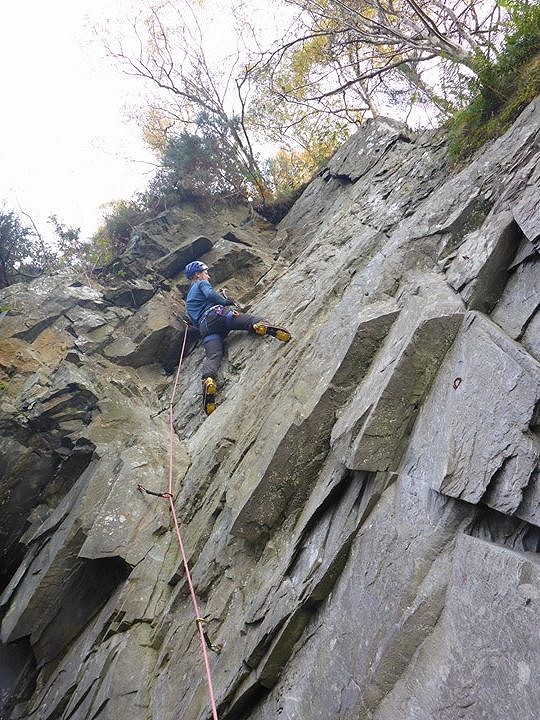
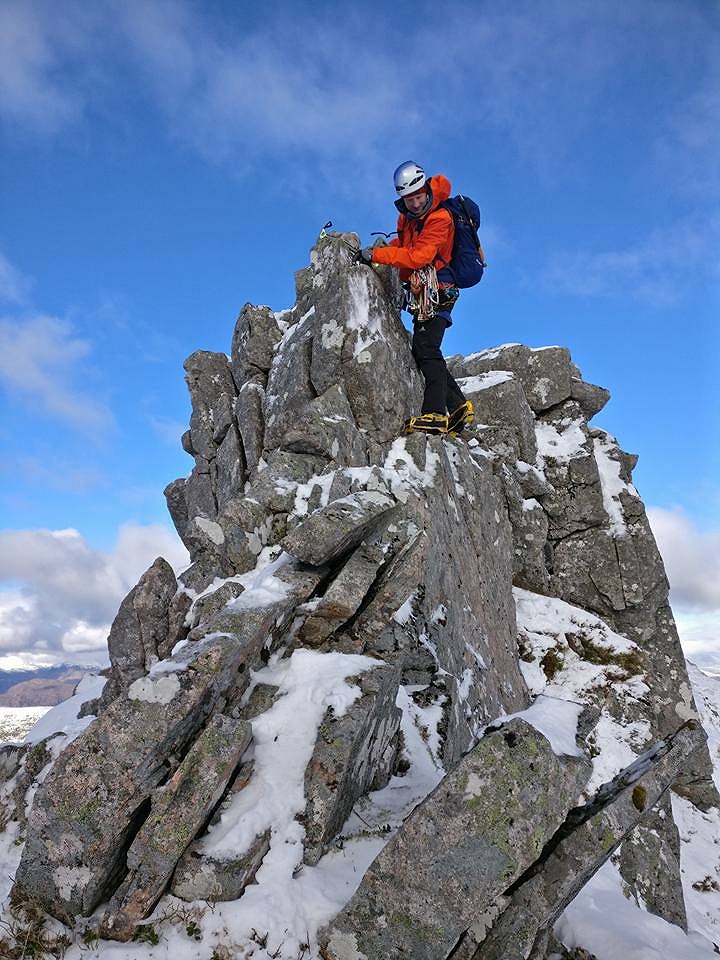
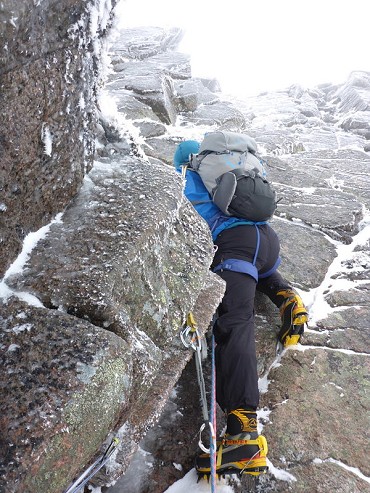
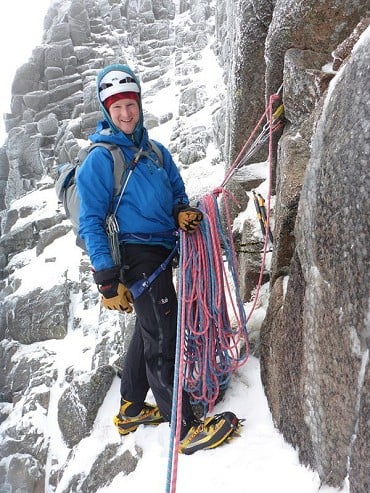

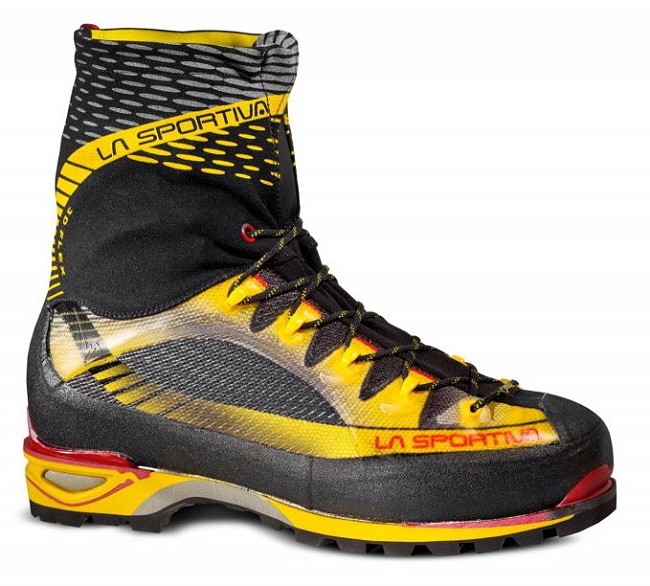


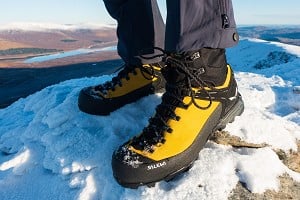
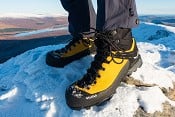
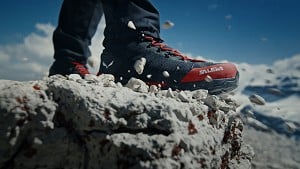

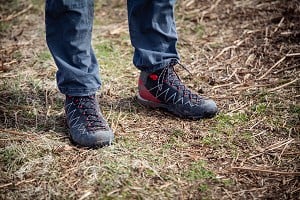

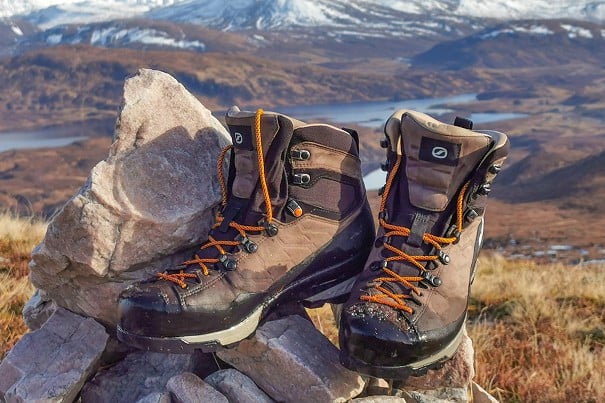
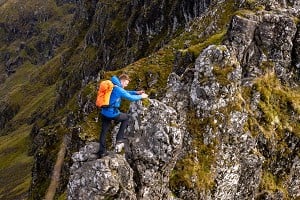

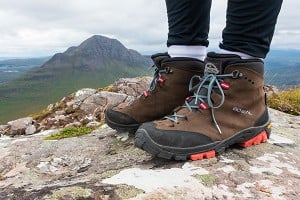
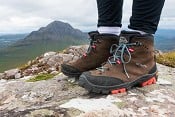
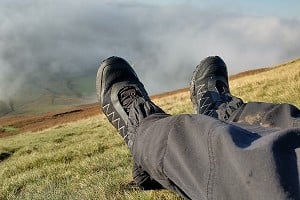

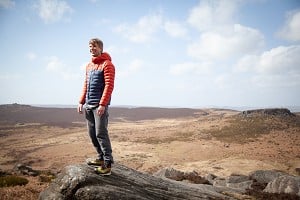



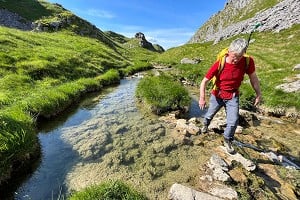
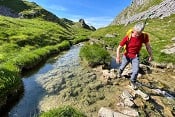


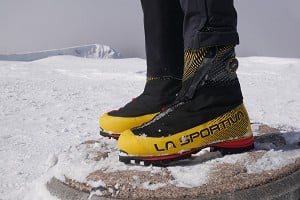
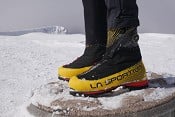
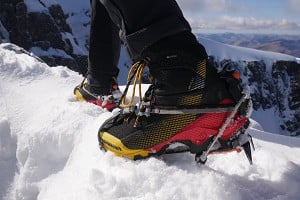
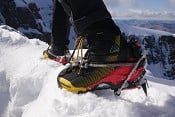
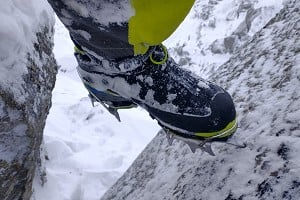
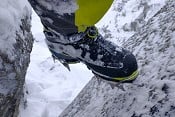
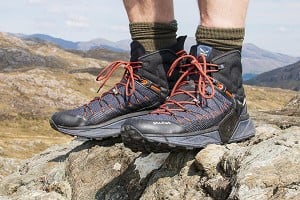
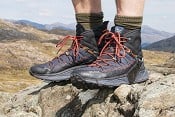
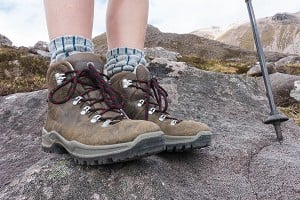
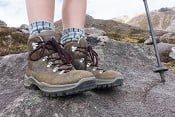

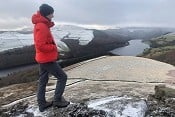

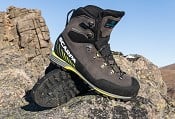
Comments